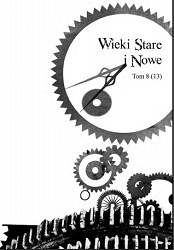Tablice epitafijne w kościele pw. Narodzenia Najświętszej Marii Panny w Mysłowicach
The epitaphs in the Church of the Nativity of Our Lady in Mysłowice
Author(s): Agata BryłkaSubject(s): Cultural history, Local History / Microhistory
Published by: Wydawnictwo Uniwersytetu Śląskiego
Keywords: Mysłowice
Summary/Abstract: The article contains an epigraphical analysis of five epitaphs from the Church of the Nativity of Our Lady in The article contains an epigraphical analysis of five epitaphs from the Church of the Nativity of Our Lady in Mysłowice: the epitaph of Katarzyna Salomonowa, of Father Michał Gosławski, of Father Jerzy Antoni Mieroszewski, of the married couple Felicjan and Helena z Łętowskich Mieroszewscy, of Kunegunda ze Zborowskich Mieroszewska and the one dedicated to the memory of Krzysztof Mieroszewski. The earliest epitaphs date back to the years 1742—1744, whereas the most recent ones date back to ca. 1880. All of the epitaphs, regardless of the date they were created, were made of black marble, the so-called Cracow marble. The inscriptions on the epitaphs feature lettering which belongs to the groups of scripts formed on the basis of humanist scripts. A majuscule script is visible in the epigraphs of Katarzyna Salomonowa, Father Michał Gosławski, Krzysztof Mieroszewski and Father Jerzy Antoni Mieroszewski. Whereas the epigraph of Felicjan and Helena z Łętowskich features a minuscule and majuscule script. As far as the three oldest inscriptions i.e. the one of Katarzyna Salomonowa, Priest Michał Gosławski and Priest Jerzy Antoni Mieroszewski, are concerned, they were written in Latin, whereas the two remaining inscriptions were written in Polish. The text features a correct transcription of the inscriptions and a list of abbreviations. The author also presented an interpretation of the extra-inscriptional elements of the epitaphs such as: coats of arms and heraldic elements, portraits of the deceased and ornamental motifs. There is also a presentation of the profiles of the people to which the epitaphs that were analysed were devoted.: the epitaph of Katarzyna Salomonowa, of Father Michał Gosławski, of Father Jerzy Antoni Mieroszewski, of the married couple Felicjan and Helena z Łętowskich Mieroszewscy, of Kunegunda ze Zborowskich Mieroszewska and the one dedicated to the memory of Krzysztof Mieroszewski. The earliest epitaphs date back to the years 1742—1744, whereas the most recent ones date back to ca. 1880. All of the epitaphs, regardless of the date they were created, were made of black marble, the so-called Cracow marble. The inscriptions on the epitaphs feature lettering which belongs to the groups of scripts formed on the basis of humanist scripts. A majuscule script is visible in the epigraphs of Katarzyna Salomonowa, Father Michał Gosławski, Krzysztof Mieroszewski and Father Jerzy Antoni Mieroszewski. Whereas the epigraph of Felicjan and Helena z Łętowskich features a minuscule and majuscule script. As far as the three oldest inscriptions i.e. the one of Katarzyna Salomonowa, Priest Michał Gosławski and Priest Jerzy Antoni Mieroszewski, are concerned, they were written in Latin, whereas the two remaining inscriptions were written in Polish. The text features a correct transcription of the inscriptions and a list of abbreviations. The author also presented an interpretation of the extra-inscriptional elements of the epitaphs such as: coats of arms and heraldic elements, portraits of the deceased and ornamental motifs. There is also a presentation of the profiles of the people to which the epitaphs that were analysed were devoted.
Journal: Wieki Stare i Nowe
- Issue Year: 13/2015
- Issue No: 8
- Page Range: 115-137
- Page Count: 23
- Language: Polish

